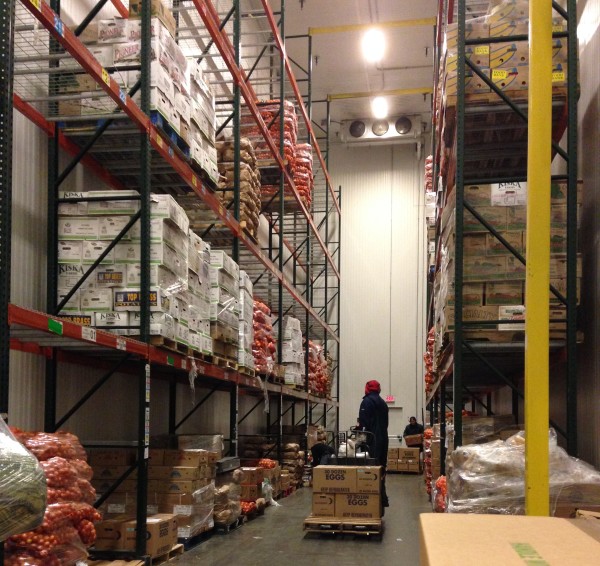Lean for Social Innovation: First Impressions
By Kayla Costa ’16. This post is the second in our Spring 2016 series that explores how the Toyota Production System (TPS) philosophy “people are our most valuable resource” is applied in real time at The Greater Boston Food Bank (GBFB) by students in MIS 3535 Lean for Social Innovation. Posts include the opinions of thought leaders and Babson student perspectives.
Headed to The Greater Boston Food Bank for the first time, I didn’t have any experience with non-profit organizations or any assumptions about how the warehouse would look when my team got there. It was helpful for me to have an unbiased view of the way their process worked and how they carried out daily activities. Some of my first thoughts were mainly centered on how the employees in the organization would react to us, a team of college students, being in their work space and observing with the goal of helping make their shipping process more efficient. Would they be open to our ideas? Would they answer our questions with detail? Or would they blow us off and assume we were not experienced enough to be able to help them?

The GBFB Warehouse
People as a Valuable Resource
Soon after arriving at the warehouse and being greeted by Angela in Agency Relations and Felix in Shipping, I realized that they were very open to our ideas and wanted to give us all the information we needed to be able to see their processes for what they really are. Swamped with their daily work, they don’t have much time to be able to take a step back and ask what waste can be eliminated or what can be implemented to aid in the agency pick-up. The first thing I noticed upon observing the dock floor was that the shipping department works tirelessly all morning to help the agencies get their orders out. With two full-time employees and very few volunteers from what we saw both days, this is an active job all morning as appointment times are rolling. Their opinions and ideas are respected and even implemented in the warehouse, which we were able to see with a new pallet layout that an employee suggested.
The Good
The most important thing I noticed was that everyone that we were able to talk to is aware that they have things to fix; no one believes that everything is running smoothly. This is important to us because they are very open to new ideas that may help solve these issues. After speaking with Angela, we learned that they have trialed different improvements for agencies taking more than the allotted 20 minutes to pick up their order. They have made the flow smoother than in the past, adding a second shipping employee and leaving a dock free for spillover and agencies that may be late. The GBFB is also working to deliver more food directly to agencies, so as to make the docking areas less congested.
Opportunities for Improvement
There are a lot. Many have to do with the IT system, something that can’t easily be changed. Focusing on the factors that can, we realized that the factors that affect each agency pick up are:
- The number of volunteers and their effectiveness.
- The amount of food ordered by the agency.
- The car height/size/convenience that the agency brings.
- The number of agencies at the GBFB at a time.
- Where the food is located on the warehouse floor, especially the items in the coolers which need to be retrieved when the agency shows up.
- The plastic wrap that has to be taken off each pallet of food.
- If the agency arrived on time.
- How fast the person working for them is.
- The backlog to get to the bay they are assigned to.
These are just our first impressions of what the pick-up system appeared to consist of. We are looking forward to diving deeper into each of these factors and finding the core business problem and ways that we can help the organization implement TPS thinking to help their processes run smoothly.
